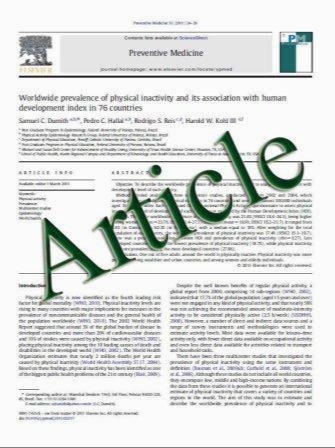Traditional-Westernizing continuum of change in screening behaviors: comparison between Arab women in Israel and the West Bank
- نوع فایل : کتاب
- زبان : انگلیسی
- مؤلف : Faisal Azaiza Miri Cohen Francoise Daoud Mriam Awad
- چاپ و سال / کشور: 2010
Description
Health perceptions are changing, but the pace of change varies across societies, exercising different effects on women’s screening behaviors. Our aim is to assess the rate of mammography and clinical breast examination (CBE) attendance in younger and older Arab women in Israel and in the West Bank, and the effect of health beliefs on the screening behaviors. A random sample of 697 Arab women, 300 from Israel and 397 from the West Bank, aged 30–65 years, answered questionnaires on screening behaviors, the Arab culture-specific barriers, fatalism, worry, and health beliefs. The participation rate was 93.5% in Israel and 98.3% in the West Bank. Higher fatalistic perceptions, traditional beliefs, barriers to bodily exposure, and social, environmental, and personal barriers to screening were reported by women from the West Bank compared to Arab women in Israel and by older women compared to the younger women. Adjusted lower likelihood of attending screening was predicted by group (AOR 3.55, 95% CI 1.25–10.11 for mammography and AOR 2.36, 95% CI 1.19–3.65 for CBE), higher fatalism (AOR 0.52, 95% CI 0.30–76 for mammography and AOR 0.68, 95% CI 0.54–92 for CBE), more traditional beliefs (AOR 0.61, 95% CI 0.48–0.80 for mammography and AOR 0.51, 95% CI 0.39–0.68 for CBE), and higher barriers to self-exposure (AOR 0.69, 95% CI 0.48–0.83 for mammography and AOR 0.76, 95% CI 0.62–0.95 for CBE), higher perceived personal barriers (AOR 0.36, 95% CI 0.12–1.08 for mammography and AOR 0.77, 95% CI 0.60–0.98 for CBE), and lower perceived benefits (AOR 1.98, 95% CI 1.17–3.34 for mammography and AOR 1.39, 95% CI 1.06–1.81 for CBE). Also, adjusted lower likelihood of CBE attendance was predicted by younger age, higher religiosity, and higher social barriers. Differences in screening behaviors of younger and older Arab women from the West Bank and from Israel represent a traditionalwesternizing continuum of change, but are also related to the social and situational context.
Breast Cancer Res Treat (2011) 128:219–227 DOI 10.1007/s10549-010-1321-1 Received: 28 September 2010 / Accepted: 18 December 2010 / Published online: 30 December 2010


